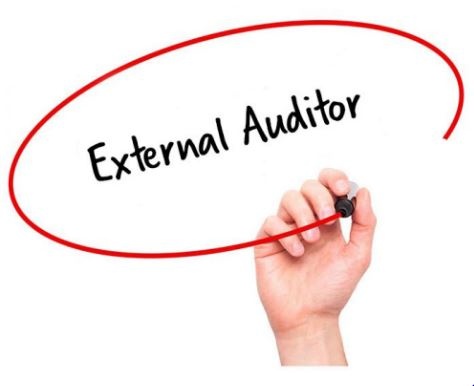SMSF Accounting and Auditing
Self-Managed Superannuation Funds (SMSFs) in Australia offer a way for individuals to control their own retirement savings. However, managing an SMSF comes with complex accounting and taxation requirements. Effective accounting practices play a vital role in managing SMSFs by ensuring accurate financial reporting, adherence to regulatory standards, and efficient asset management. Key accounting responsibilities for SMSFs include maintaining detailed records of all transactions, encompassing contributions, investments, expenses, and disbursements. Thorough record-keeping promotes transparency and simplifies the audit process. SMSFs are required to compile yearly financial statements, comprising a Balance Sheet, Profit and Loss Statement, and Member Statements. Accurate valuation of SMSF assets is critical for calculating the fund's net asset value and staying compliant with regulations, with assets needing to be valued at their market worth at least once a year. Additionally, SMSFs must comply with taxation rules, including lodging an annual tax return with the Australian Taxation Office (ATO). Proper accounting ensures accurate calculation of tax liabilities and entitlements.
Self-Managed Superannuation Funds (SMSFs) in Australia offer a way for individuals to control their own retirement savings. However, managing an SMSF comes with complex accounting and taxation requirements. Effective accounting practices play a vital role in managing SMSFs by ensuring accurate financial reporting, adherence to regulatory standards, and efficient asset management. Key accounting responsibilities for SMSFs include maintaining detailed records of all transactions, encompassing contributions, investments, expenses, and disbursements. Thorough record-keeping promotes transparency and simplifies the audit process. SMSFs are required to compile yearly financial statements, comprising a Balance Sheet, Profit and Loss Statement, and Member Statements. Accurate valuation of SMSF assets is critical for calculating the fund's net asset value and staying compliant with regulations, with assets needing to be valued at their market worth at least once a year. Additionally, SMSFs must comply with taxation rules, including lodging an annual tax return with the Australian Taxation Office (ATO). Proper accounting ensures accurate calculation of tax liabilities and entitlements.
Importance of Accounting (SMSFs)
Effective accounting practices play a vital role in managing SMSFs by ensuring accurate financial reporting, adherence to regulatory standards, and efficient asset management. Key accounting responsibilities for SMSFs include:
1.Maintaining Records:
1.Maintaining Records:
SMSFs need to keep detailed records of all transactions, encompassing contributions, investments, expenses, and disbursements. Thorough record-keeping promotes transparency and simplifies the audit process.
2.Preparing Financial Statements:
SMSFs have a requirement to compile yearly financial statements, comprising a Balance Sheet, Profit and Loss Statement, and Member Statements.
3.Asset Valuation:
Accurate valuation of SMSF assets is critical for calculating the fund's net asset value and staying compliant with regulations. Assets must be valued at their market worth at least once a year.
4.Taxation:
SMSFs must comply with taxation rules, including lodging an annual tax return with the (ATO). Proper accounting ensures accurate calculation of tax liabilities and entitlements.
Importance of Auditing for SMSFs
Auditing is a compulsory requirement for (SMSFs). An impartial auditor must be designated to perform an annual audit of the fund's financial statements and evaluate its adherence to superannuation regulations. The audit process comprises:
1.Financial Examination:
The auditor reviews the financial statements of the SMSF to confirm they present a accurate and unbiased overview of the fund's financial position and performance. This involves validating transactions, asset valuations, and the overall precision of the financial records.
2.Regulatory Compliance Audit:
The auditor determines whether the SMSF conforms to the Superannuation Industry (Supervision) Act 1993 (SIS Act) and other applicable regulations. This involves verifying compliance with investment guidelines, contribution thresholds, and reporting requirements.
Steps in the SMSF Audit Process
1.Planning:
The auditor reviews the SMSF's structure, previous audit reports, and any changes in regulations or circumstances that might impact the audit.
2.Fieldwork:
The auditor conducts on-site examinations or reviews documents provided by the trustees. This includes checking financial records, bank statements, investment documents, and minutes of trustee meetings.
3.Reporting:
Upon completing the audit, the auditor provides an audit report, which includes the audit opinion and details of any compliance breaches or issues identified during the audit. This report must be submitted to the ATO.
4.Rectification:
If the audit identifies any compliance issues, the trustees must take corrective actions to address these breaches. Failure to rectify issues can result in penalties or other regulatory actions.
Advantages of Regular Accounting and Auditing
1.Compliance Confidence:
Ensures adherence to regulatory standards, minimizing the risk of fines and legal complications.
2.Financial Transparency:
Offers trustees and members a clear insight into the fund's financial status and performance.
3.Risk Mitigation:
Identifies and resolves potential risks and concerns, protecting the fund's assets and the interests of members.
4.Informed Decision-Making:
Reliable financial data facilitates informed decisions on investments, contributions, and benefits disbursement.














































